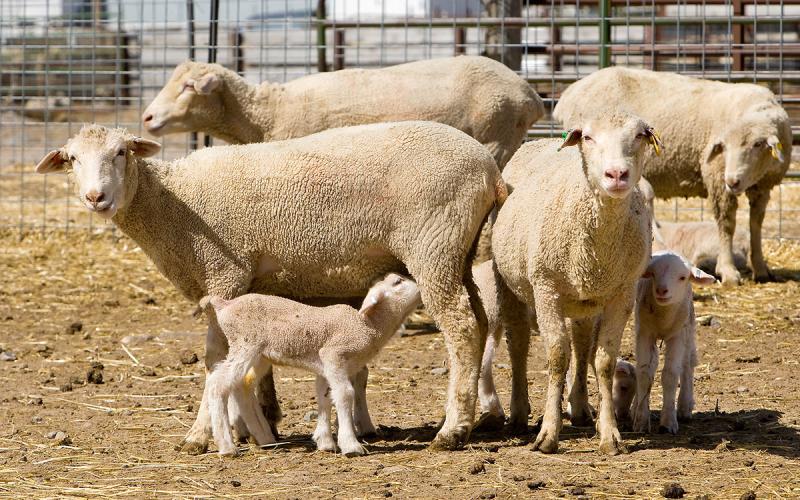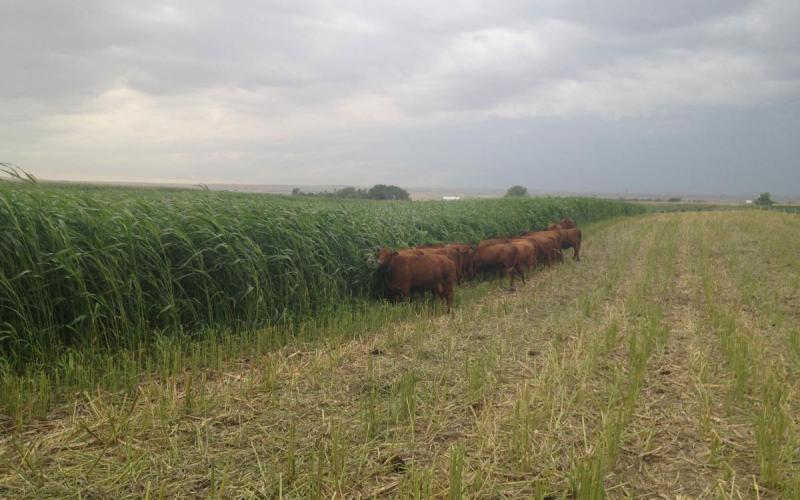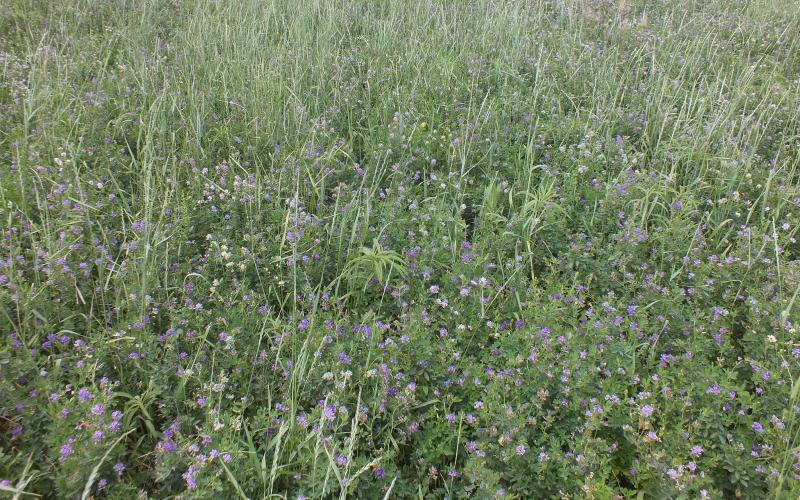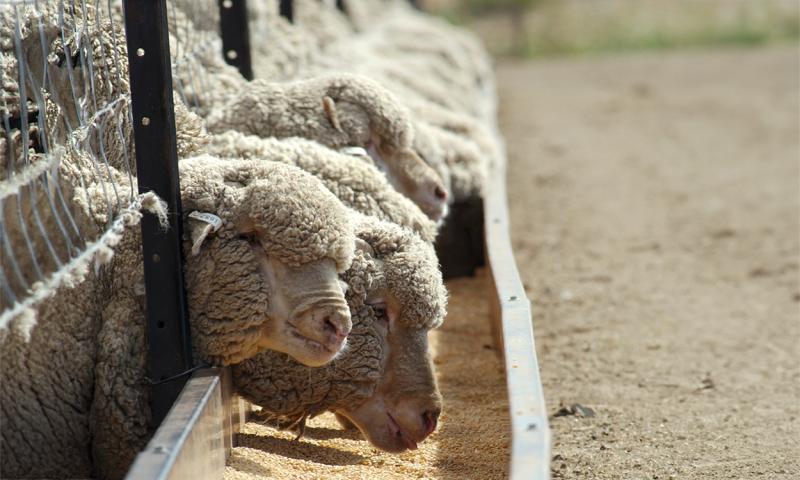
Waterbelly (urolithiasis or urinary calculi) occurs in male sheep and goats and can cause significant production losses. Most commonly, waterbelly is a concern in wethers on a high-concentrate ration. Knowing the symptoms, forms, and prevention of waterbelly will help you make the best decisions for your sheep or goats.
What Causes Waterbelly?
Urolithiasis is caused by the blockage of the urethra by stones that are formed in the bladder. Young wethers are particularly prone to waterbelly, because castration reduces the growth of the reproductive organs. However, this can occur in bucks also. Ruminant males have an “s” shaped curve in their penis called the sigmoid flexure. Stones are more easily caught in the smaller urethral tube within the sigmoid flexure. Smaller crystals can also get caught in the vermiform appendage at the tip of the penis. Early symptoms may include reduced urine flow, hunched backs, and abdominal discomfort. Eventually, the stones will completely block urine flow, eventually distending or rupturing the bladder. This causes the abdomen to look swollen or distended and feel fluid, hence the name waterbelly. Most commonly, wethers develop these stones due to an improper Calcium:Phosphorus ratio in the ration. However, stone development is multifactorial and based on the type of stone present.
Types of Stones
There are four types of stones most commonly seen in small ruminants. Phosphatic and calcium carbonate stones are the most common, but calcium oxylate and silica stones can occur also.
Phosphatic
Also referred to as struvite or magnesium ammonium phosphate stones, these soft, small stones build up in the urinary tract of animals on concentrate diets. Unlike the other crystals, these are not easily seen on ultrasound. High phosphorus in the diet leads to phosphatic stones.
Calcium Carbonate
Caused by excess calcium in the diet, calcium carbonate stones are more common when feeding a high-legume diet (such as alfalfa).
Calcium Oxylate
Animals grazing oxylate containing plants (such as, greasewood). Oxylates are toxic compounds that can cause hypocalcemia and death.
Silica
This crystal type is caused by high-silicate containing forages seen more often in the western states with high silicate soils. Excess calcium or insufficient phosphorus while grazing results in these hard stones.
Treatment
Once animals are exhibiting abdominal pain and trouble urinating, treatment often requires surgical intervention. If left untreated, the bladder ruptures into the abdomen contributing to the name “waterbelly.” Identifying the type of stone present is important in management decisions moving forward. A veterinarian can perform an ultrasound to see the urethral obstruction. However, phosphatic stones are sometimes challenging to see on an ultrasound. Therefore, prevention is the best way to protect small ruminants against waterbelly.
Prevention
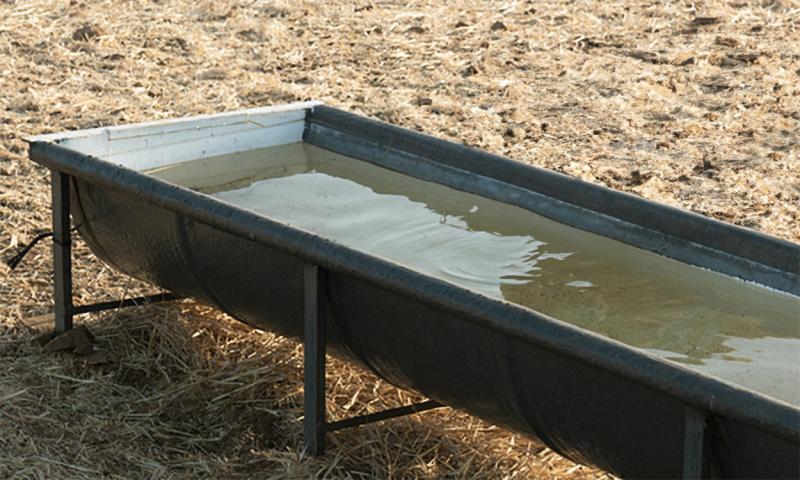
- Promoting water consumption to dilute the urine and increase urination is the easiest way to prevent waterbelly. When on a high grain diet, the animal’s body shunts water to the rumen, decreasing urination. Providing free-choice salt can encourage water intake. Clean, quality water should always be a top priority.
- Delayed castration can increase the diameter of the urethra, allowing for easier stone passage.
- Ensure that the diet contains a Calcium:Phosphorus ratio of 2:1. As mentioned above, phosphatic stones are a result of too much phosphorus, while calcium carbonate stones are caused by too much calcium. Access to a complete mineral and balancing forage and concentrate is key in preventing waterbelly.
- Ammonium chloride can be added at 0.5% of the ration to reduce the risk of phosphatic stones by increasing the urinary pH and dissolving the stones. However, if animals are suffering from calcium carbonate stones, ammonium chloride may not dissolve the stones and may lead to over-acidification and additional calcium excretion into the urine increasing stone formation.
In Summary
With proper nutrition and husbandry, urolithiasis can be easily prevented. If it should occur in your flock/herd, working with a veterinarian and identifying the type of stone is crucial for management and treatment decisions.
References
- Cook, M. J. 2023. Urinary Calculi of Small Ruminants. Vet Clin North Am Food Anim Pract. 39:355–370. doi:10.1016/j.cvfa.2023.02.006.
- LeValley, S., and B. Kirch. 2010. Urinary Calculi in Wether Lambs/Kids. Colorado State University Extension. (Accessed 13 August 2024.)
- Merck Veterinary Manual. 2021. Urolithiasis in Ruminants. (Accessed 13 August 2024.)
